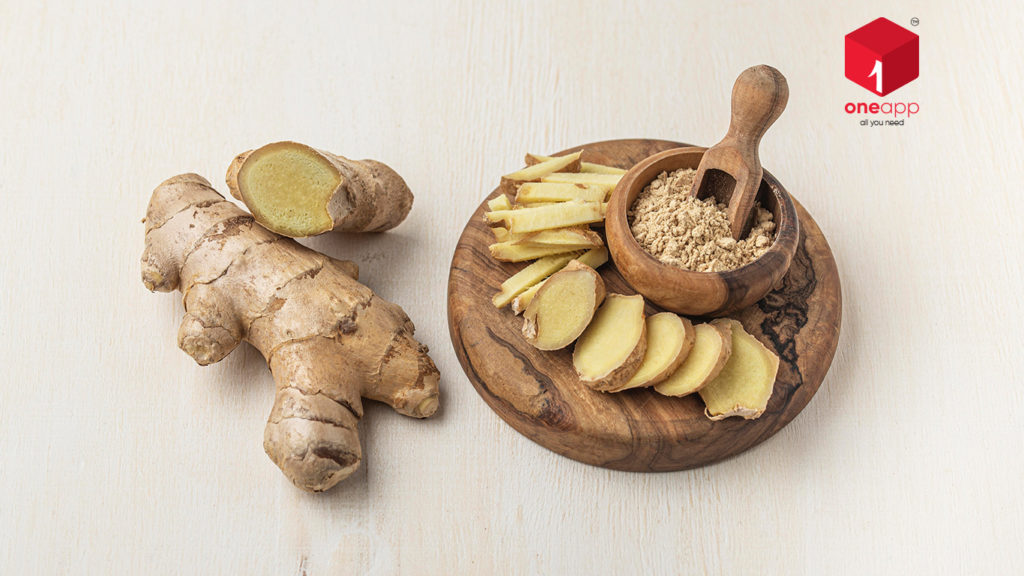Ginger is known to zing up just about anything. This fresh, sweet and spicy root is a perfect way to bolster flavour in almost everything, be it warming curry recipes, zippy dressings to bold baked goods.
WHAT IS A GINGER?
Fresh ginger is technically a rhizome, but in common parlance, it is known as a root. It happens to be a terrific flavour builder which is full of health benefits. It’s available fresh as well as ground or powdered.
CHOOSE WISELY:
When shopping for fresh ginger, always look for firm, moist roots that feel heavy for their size. There will often be a rough, dried patch where the section of the root has been cut or broken off. One need not worry about that but do not purchase it if the root itself is dried and shrivelled.
HOW TO STORE GINGER?
Ginger can be stored well on a kitchen counter for a few days, but to keep it fresh longer, make sure to wrap it in paper towels, put it inside a plastic container or zip pouch and keep it in your refrigerator. It can also be frozen if kept in an airtight plastic container. Many people peel and mince the ginger first before freezing it, for their convenience.
Despite the fact that we can find it all year round in most markets, fresh ginger does have a season. Young ginger is found in the spring, usually in Asian markets and doesn’t have a strong flavour as the older grocery store root. It has a fresh lively taste and is less fibrous in texture, with hardly any skin on it that need not be peeled.
HOW TO PREPARE IT?
It’s always recommended to peel fresh ginger before using it in recipes, as the skin can be a little tough to digest. If the skin of particular ginger is stubborn or thin, small patches of skin can be left on its root itself. Ginger needs to be peeled properly if, If it is going to be finely chopped and mixed with many other things. One can use a spoon, vegetable peeler or a knife to peel it and it can also be easily grated with a Microplane or minced with a knife.
HEALTH BENEFITS OF GINGER:
Ginger has mostly been known to stimulate digestion, reduce nausea and inflammation, positively affect cholesterol levels and also help to give relief to a sore throat. Ginger ale is often used for belly aches and flu-like symptoms.
BEST WAYS TO COOK WITH GINGER?
Ginger has a unique way of livening up any dish but can also strong-arm every dish. Let’s discuss four ways to use ginger to build a balanced food that is not too spicy or sweet.
1. Make a spicy hot tea:
Use ginger to brew it into hot tea. Just slice up a hunk of fresh ginger (no need to peel) and pour some boiling water over it. Add a little bit of honey and a bit of lemon and you have the perfect winter tonic ready in minutes. One can also add bourbon and call it a cough syrup for grownups.
2. Stir it into soup:
Be it fresh, grated or pureed, ginger brings in a wonderful zest to hot and creamy winter soups. It also pairs perfectly with carrots, cauliflower, pumpkin and winter squashes as well as Indian spice mixes and Asian flavours.
Also, read our article on “Headline: Chicken Coriander Soup To Boost Immunity“
3. Spice up stir-fries, grain bowls and salad dressings:
Fresh ginger adds a fantastic flavour to many condiments and meals. In almost every stir-fry, one can add a little grated or even minced ginger to spice things up. You can even toss a knob into the cooking water for grains to boost flavour and put some grated ginger in salad dressings. Spring rolls are known to be another great place to incorporate ginger.
4. Swirl it into sweets:
Especially during the winter, there are lots of sweet things that can be made with fresh ginger. Try stepping some milk with ginger for making caramels, one may stir fresh ginger into carrot or pumpkin bread. Ginger cookies have always been a favourite. One can also try baking ginger hand pies or pumpkin pie with fresh ginger and even double down and add candied ginger with the fresh ginger.
Keep your kitchen stocked with fresh vegetables and herbs, order them online with oneapp and get them delivered to your doorstep.

